Search
Frequently Asked Questions
What is the current value of my instrument?
Where can I purchase my Hans Hoyer Instrument?
In the unlikely case of a manufacturer’s defect: how I get my Hans Hoyer horn repaired?
Where do our brand name Hans Hoyer come from?
What is a 3B linkage system?
On my older instrument, will red spots visible- what is it?
What does the additional F-extension slide for the Bb horn model 704 do?
How can I fit my mouthpiece perfectly to the K10?
What is the current value of my instrument?
The value of a musical instrument can not be determined by the model and age only – playability and overall condition play an even more important role.
Considering this, it is easy to understand that no one has a chance to realistically comment on the value of a specific instrument from the distance without being able to physically inspect the instrument: chances are that repairs, overhauls and/or modifications were made by the previous owner(s) at some point – also, no one can comment on valve or slide action, dents or scratches or general wear and tear of the lacquer or plating from the distance.
Your local repair expert will be able to assist you and provide a detailed evaluation after inspecting your instrument physically and professionally.
Where can I purchase my Hans Hoyer Instrument?
Hans Hoyer Horns and accessories are only sold through authorized agents.
A dealer in your area can be found here.
In the unlikely case of a manufacturer’s defect: how I get my Hans Hoyer horn repaired?
(For warranty content, please see the user and warranty information booklet that is accompanied with each instrument)
Always immediately contact the dealer where you have purchased your instrument. They will handle the warranty for you and determine which steps are necessary to fix the problem in close cooperation with us.
With each and every warranty claim the serial number (to be found on the leadpipe receiver) must be provided.
Any repair must be approved by the manufacturer prior to being executed – or you risk voiding the warranty.
For obvious reason, damages due to improper use of the instrument, lacking care and maintenance and unauthorized repairs are not covered by the manufacturer’s warranty.
Where do our brand name Hans Hoyer come from?
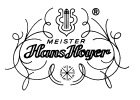
Meister Hans Hoyer: The Hoyer family belongs to one of the oldest brass maker families of the region. The ancestors of the master Hans Hoyer find its first mention of the early 19th century. Hans Hoyer from Klingenthal, was himself head of the brigade for the VEB French horn building.
One of the great and innovative horn makers in the region. He was a frequent winner of gold medals of Leipzig therefore chose the VEB his name as its own individual master name and brand.
What is a 3B linkage system?
In contrary to the existing linkages, the new 3B linkage system uses two steel balls in bronze ball bearings for each valve in order to optimize the transmission: one ball connects the valve action rod to the bottom of the lever, the other one is connected to the stop arm.
3B stands for “Bronze Ball Bearing”, or in other words for a steel ball that is held within a bronze bearing. Additionally to this perfect gliding combination of steel and bronze, a spring on the connector to the valve action rod keeps the linkage in an optimal position to guarantee a perfectly smooth moving. In the end, it feels not much different to a string mechanism rotary valve.
On my older instrument, will red spots visible- what is it?
This is most likely a so-called “red dot”, a copper hole. Constant exposure of moisture – for example when the instrument after playing not drying – after a long period leads to dezincification. That means the zinc is removed from the connection material is removed or “corrode” and the red dot left behind. The affected part must be replaced. This is easy with a little care to avoid.
Please see also our » care instructions.
Incidentally, gold brass (and silver) is largely resistant to dezincification.
What does the additional F-extension slide for the Bb horn model 704 do?
With this slide you can use your thumb activated (previous “stop”) valve on the 704 Bb horn in a new “upgraded” way: When pressed, the extension now works on certain notes in the middle and low register like the F side of a double horn. Simply put, the horn now allows you to use alternative fingerings to improve intonation.
How can I fit my mouthpiece perfectly to the K10?
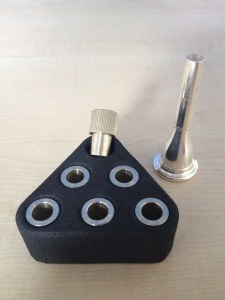
Mouthpiece position in the Horn’s leadpipe is critical:
Only if the mouthpiece fits correctly can perfect production and articulation be ensured. In order to achieve a perfect fit, the new K10 is supplied with different mouthpiece receivers which cure the basic problem of differing mouthpiece shanks.
Please select the correct mouthpiece receiver for your mouthpiece and screw it onto the thread on your K10 lead pipe.
Correct: mouthpiece end is aligned with receiver end
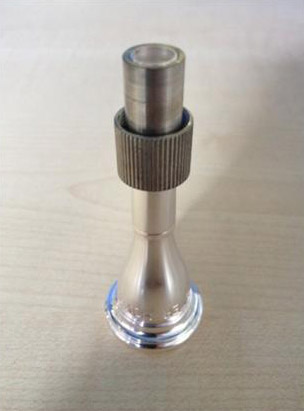
Incorrect: mouthpiece not aligned; not far enough inside the receiver
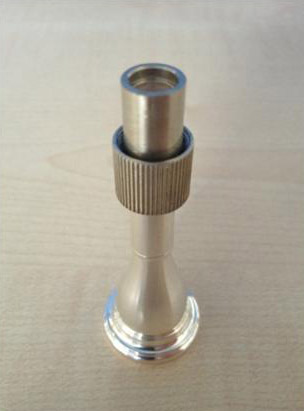
Incorrect: mouthpiece not aligned; sticking out
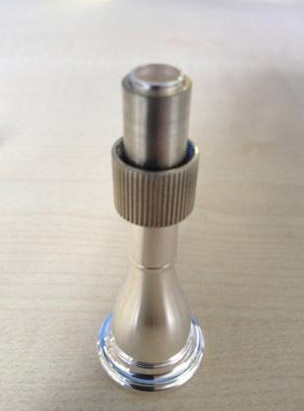
Every K10 is supplied as standard with a selection of mouthpiece receivers which fit the most common mouthpiece shanks.* Additional mouthpiece receivers are available through your dealer.
*Every K10 is supplied with the following receivers:
- For taper 1:20 (eg Hoyer, Klier, Yamaha mouthpieces): 4,5 – 5 – 5,5
- For taper 1:30 (eg Tilz, Paxman E, Alexander mouthpieces): 6,0T – 7,0T – 8,0T
MHH-information-fitting-mouthpiece-receiver-K10.pdf (125,7 kB)